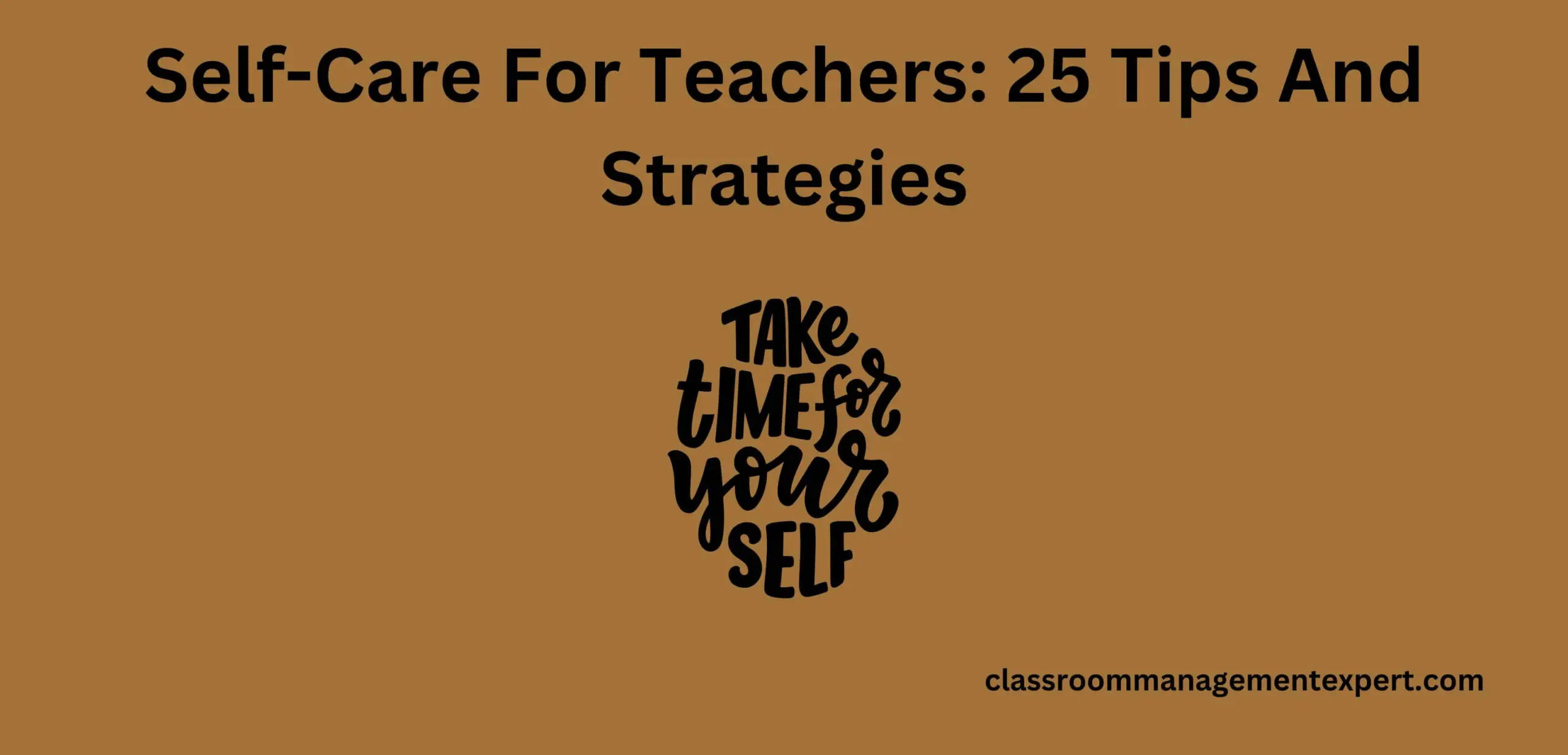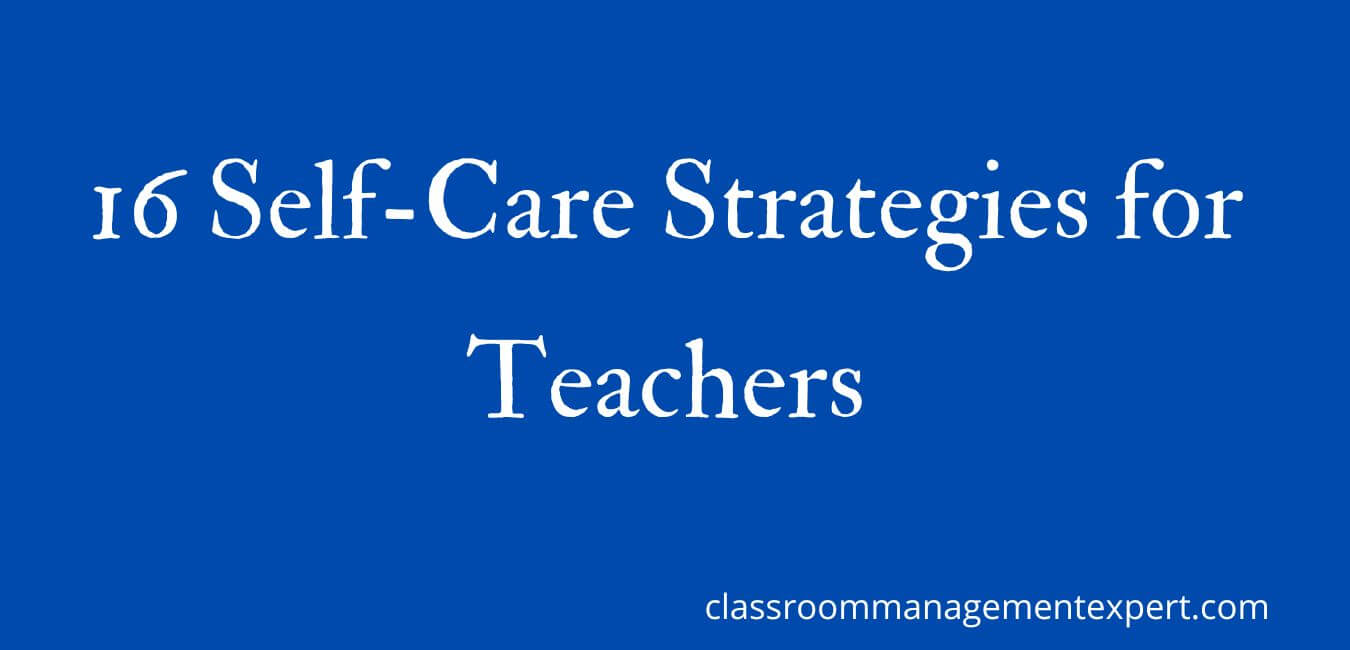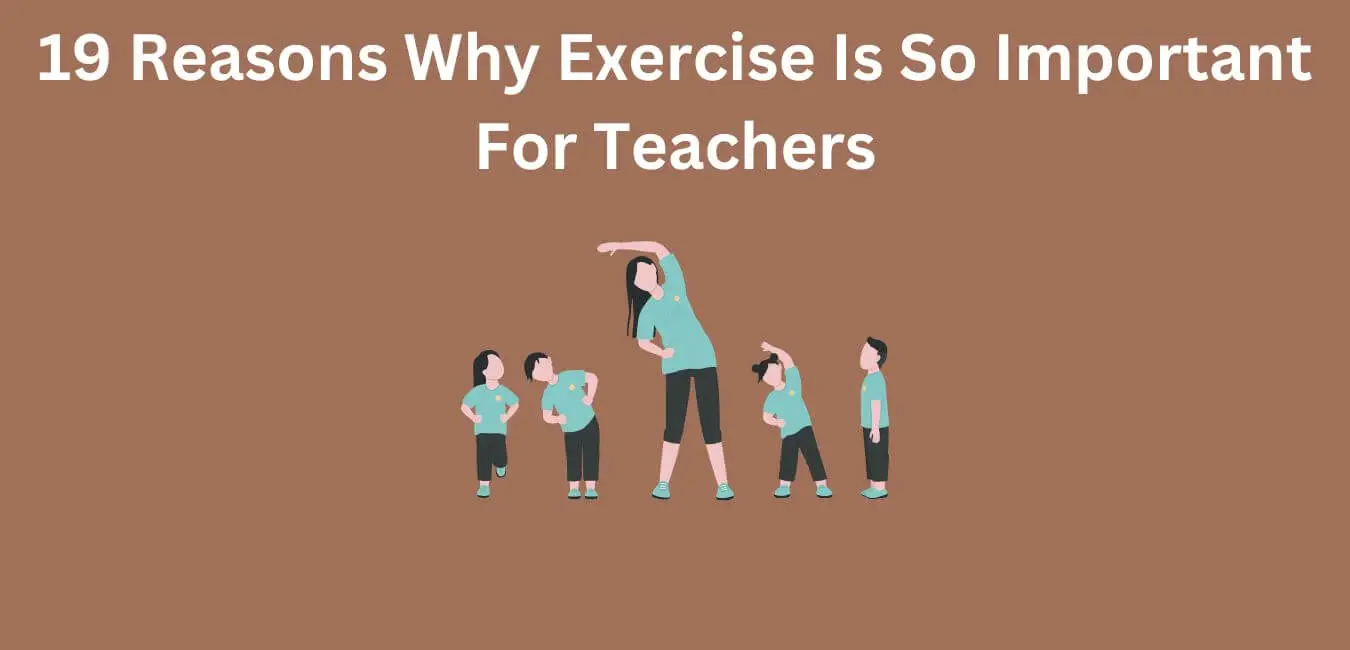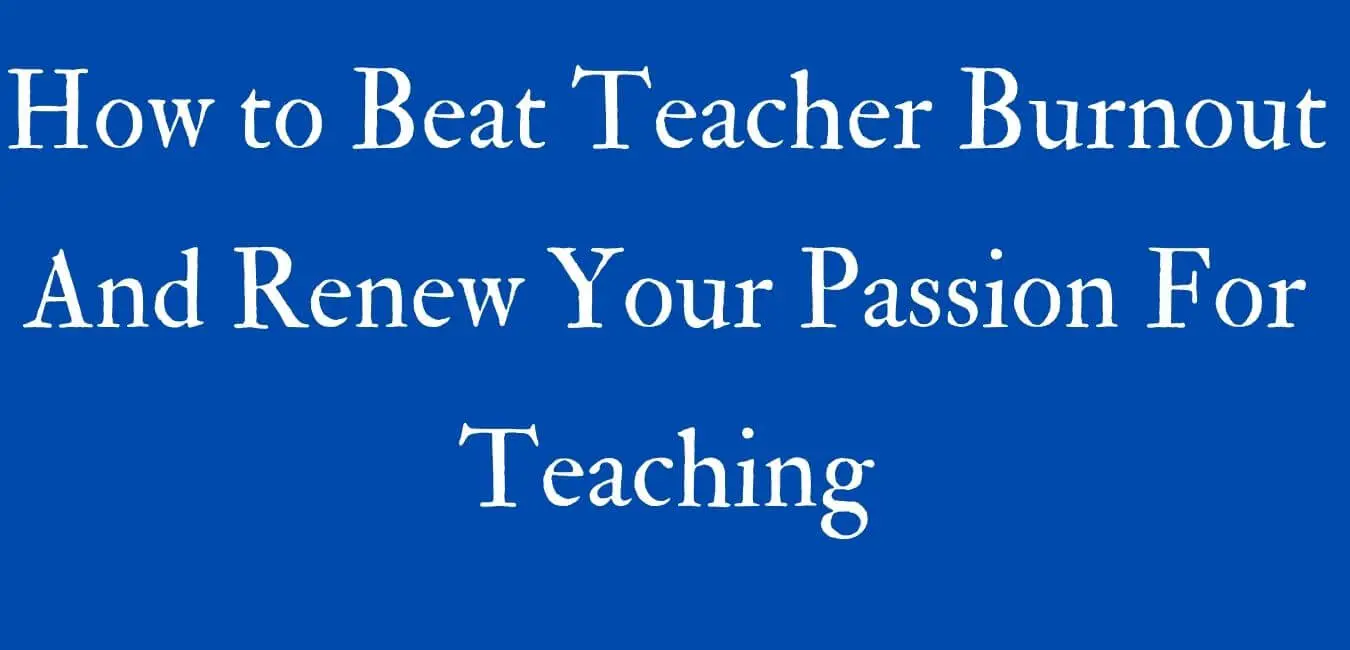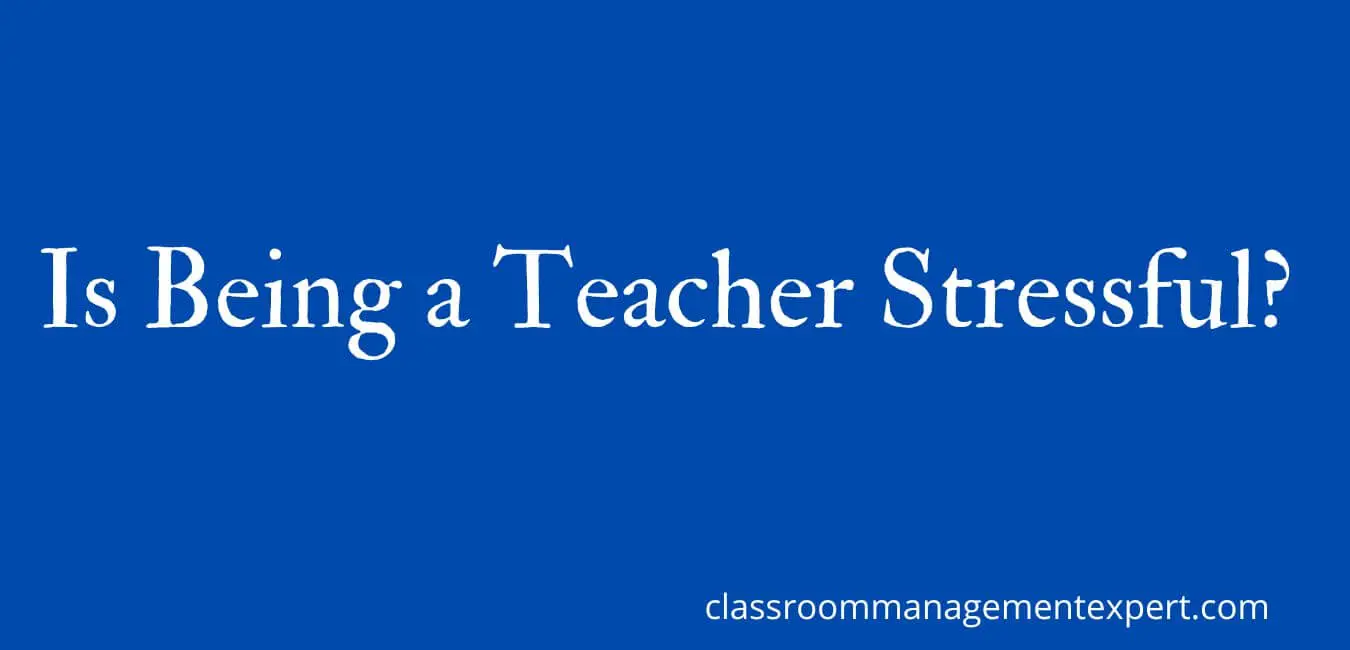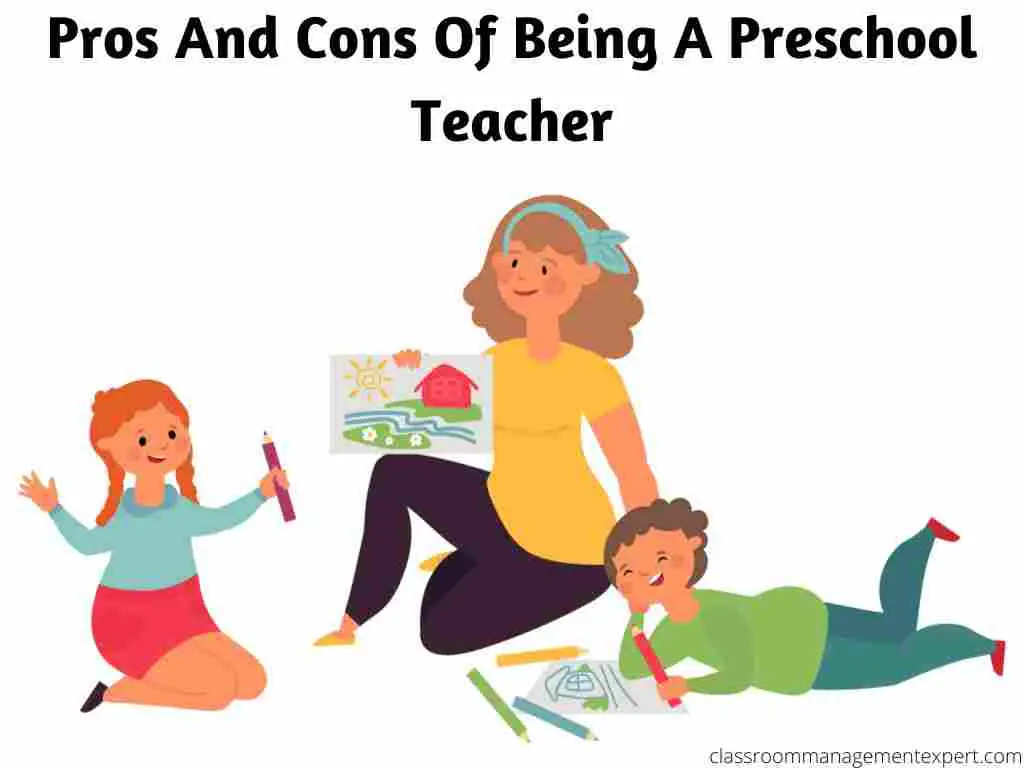As a teacher, I know first-hand the challenges and demands that come with the job. We pour our hearts and souls into our work, often sacrificing our own well-being in the process. But what if I told you that taking care of yourself is not only important, but essential to being the best teacher you can be?
Self-care is often seen as a luxury or an indulgence, but it’s actually a necessity for anyone in a demanding profession. As teachers, we need to prioritize our own physical, emotional, and mental health in order to show up fully for our students.
In this article, I’ll be sharing 25 tips and strategies for incorporating self-care into your daily routine, so that you can not only survive, but thrive as a teacher. So take a deep breath, give yourself permission to prioritize your own well-being, and let’s dive in.
Tips for Taking Care of Yourself as a Teacher
1. Recognizing the Need for Self-Care
It’s time to start acknowledging when we’re running on empty and take action to prevent burnout. As teachers, we often put others before ourselves and neglect our own needs.
Recognizing our boundaries and limitations is the first step toward self-care. We need to be self-aware of our own emotional exhaustion and stress levels and prioritize our own well-being.
Stress management is key to preventing burnout. We need to learn to manage our stress before it manages us. This means finding healthy ways to cope with stress, such as exercise, meditation, or talking to a friend. It also means setting boundaries and learning to say no when we need to.
We can’t be everything to everyone, and it’s okay to put ourselves first sometimes. Self-care is not selfish, it’s necessary. We can’t pour from an empty cup, and we need to prioritize our own well-being in order to be effective teachers.
By recognizing the signs of burnout and taking action to prevent it, we can create a healthier and more sustainable work-life balance. It’s time to start taking care of ourselves, so we can continue to take care of our students.
2. Prioritizing Your Own Well-Being
You need to make sure you take care of yourself before you can take care of anyone else, so prioritize your well-being with these easy-to-implement suggestions. Recognizing burnout, work-life balance, mental health, stress management, and personal fulfillment are all crucial aspects of self-care that teachers should consider. By prioritizing your own well-being, you will be better equipped to handle the demands of your job and provide the best care for your students.
- Schedule time for yourself: Whether it’s a morning yoga session, an afternoon walk, or a relaxing bath before bed, taking time for yourself is essential. Schedule it into your day and treat it as a non-negotiable appointment.
- Set boundaries: Learning to say no and setting limits on your time can be difficult, but it’s necessary for maintaining a healthy work-life balance. Don’t be afraid to say no to additional responsibilities or work outside of your contracted hours.
- Find a hobby: Engaging in a hobby outside of work can provide a much-needed mental break and a source of personal fulfillment. Whether it’s reading, painting, or playing an instrument, find something you enjoy and make time for it regularly.
By prioritizing your own well-being, you can prevent burnout and ensure that you are able to provide the best care for your students.
In the next section, we’ll discuss setting realistic goals for self-care to help you stay on track and continue to prioritize your well-being.
3. Setting Realistic Goals for Self-Care
Take a moment to map out achievable goals for your self-care journey, using baby steps to build a strong foundation for your well-being. It’s easy to get caught up in the excitement of making changes, but it’s important to set realistic goals that you can achieve over time.
Start by assessing your current habits and identifying areas where you want to improve. Once you’ve identified your goals, break them down into small, achievable progress steps. This will help you build momentum and feel a sense of accomplishment as you make progress toward your overall goal.
Time management is key when it comes to achieving your self-care goals. Carve out dedicated time in your schedule to focus on your well-being. This could mean waking up an hour earlier to meditate, taking a lunch break to go for a walk, or scheduling a weekly yoga class.
Be intentional with your time and hold yourself accountable to your self-care routine. You can also find accountability partners who share your goals and support each other in making progress. Checking in with a friend or family member can help keep you motivated and on track.
Remember to adjust your expectations as you go. Self-care is a journey, not a destination, and it’s okay to make changes to your routine as you learn what works best for you. Don’t beat yourself up if you miss a day or fall off track. Simply acknowledge it and get back on track as soon as possible.
By setting realistic goals, managing your time effectively, and adjusting your expectations, you’ll be well on your way to creating a sustainable self-care routine that supports your overall well-being. Next, let’s dive into creating a self-care plan that’s tailored to your unique needs and preferences.
4. Creating a Self-Care Plan
Now that you’ve set achievable goals for your well-being, let’s create a personalized self-care plan that fits your unique lifestyle and preferences.
A self-care plan is important because it helps you take intentional steps toward improving your mental, physical, and emotional health. Creating a plan helps you identify areas that need attention, set priorities, and stay accountable to yourself.
Steps to creating a self-care plan include identifying activities that bring you joy, relaxation, and fulfillment. Make a list of these activities and schedule them into your daily or weekly routine. It’s important to be realistic about your time and energy, so choose activities that you can realistically commit to.
You can also consider seeking support from a therapist or coach to help you establish a plan that works for you. The benefits of having a self-care plan are numerous, including reduced stress, improved mood, increased productivity, and better overall health. However, there are also challenges to sticking to a plan, such as unexpected events or lack of motivation.
To overcome these challenges, it’s important to stay accountable to yourself and adjust your plan as needed. Remember, self-care is an ongoing process and requires consistent effort.
Schedule self-care activities into your daily or weekly routine. Choose activities that bring you joy, relaxation, and fulfillment. Seek support from a therapist or coach to help you establish a plan that works for you. Stay accountable to yourself and adjust your plan as needed. Remember that self-care is an ongoing process and requires consistent effort.
As we move into the next section about making time for exercise, it’s important to recognize that exercise is a key component of self-care. Incorporating regular physical activity into your routine can improve your physical health, boost your mood, and reduce stress. Let’s explore some strategies for making time for exercise in your busy schedule.
5. Making Time for Exercise
Incorporating regular exercise into your routine can have significant benefits for your physical and mental health, but finding the time can be a challenge.
One way to make exercise more enjoyable and less daunting is to try group fitness classes or find a workout buddy. It’s easier to stay motivated when you have someone to hold you accountable and push you to reach your goals. Plus, it can be a fun way to socialize and connect with others who share your interests.
If you prefer outdoor activities, consider going for a hike, bike ride, or run in nature. Being surrounded by fresh air and natural scenery can be calming and rejuvenating. Alternatively, you can try a yoga practice or other mindful movement activities, which can help reduce stress and improve flexibility and balance.
Even if you only have a few minutes a day, incorporating some form of physical activity into your routine can make a big difference in how you feel and function.
Remember, taking care of yourself is not a luxury, it’s a necessity. Prioritizing exercise and movement is just one way to boost your energy, mood, and overall well-being.
In the next section, we’ll explore some tips for incorporating healthy eating habits into your busy routine.
6. Incorporating Healthy Eating Habits
You might be surprised at how easy it can be to eat healthy, even with a busy schedule. As a teacher, I know how hectic our days can be, but incorporating healthy eating habits is essential for our well-being.
Here are three tips that have helped me make better food choices:
- Healthy meal planning: Plan your meals ahead of time to avoid making unhealthy choices at the last minute. Take some time on the weekend to plan your meals for the week ahead and make a grocery list. This will help you stay on track and avoid the temptation of fast food or unhealthy snacks.
- Mindful eating: Pay attention to what you eat and how much you eat. Eat slowly, savor each bite, and enjoy your food. Mindful eating can help you make better food choices and avoid overeating.
- Meal prep strategies: Meal prepping is a great way to save time and ensure you have healthy meals ready to go. Spend a few hours on the weekend prepping your meals for the week ahead. You can cook in bulk, portion out your meals, and store them in the fridge or freezer for easy access throughout the week.
Incorporating these strategies into your routine can help you maintain a balanced diet and improve your overall health. By making healthy eating a priority, you’ll have more energy and be better equipped to handle the demands of your busy schedule.
In the next section, we’ll discuss the importance of getting enough sleep and some tips for achieving a restful night’s sleep.
7. Getting Enough Sleep
Getting enough sleep is like recharging your batteries so that you can tackle the challenges of the day with renewed energy and focus. As a teacher, it’s important to prioritize sleep hygiene to ensure that we get the necessary rest we need.
Sleep deprivation can lead to a lack of concentration, mood swings, and overall fatigue, which can negatively affect our performance in the classroom.
To improve our sleep quality, it’s essential to establish a consistent sleep schedule. By going to bed and waking up at the same time every day, our bodies will adjust to this routine and make it easier to fall asleep at night.
Additionally, creating a calming sleep environment can promote better sleep. This can be achieved by keeping the bedroom quiet, cool, and dark, and avoiding the use of electronic devices before bedtime.
As teachers, we often have a lot on our minds, making it difficult to shut off our thoughts and relax. Practicing mindfulness and meditation can help us unwind and calm our minds before bed. By focusing on our breath and being present at the moment, we can let go of stress and anxiety, making it easier to fall asleep.
By making sleep a priority and practicing good sleep habits, we can ensure that we are well-rested and prepared to tackle the day’s challenges with renewed energy and focus.
8. Practicing Mindfulness and Meditation
Sometimes it can be hard to turn off our thoughts and relax, but practicing mindfulness and meditation before bed can be a game-changer for improving our sleep quality as educators.
Mindfulness practices involve being present and fully engaged in the current moment, without judgment or distraction. Meditation, on the other hand, involves intentionally focusing on a particular thought, image, or sensation to achieve a sense of calm and inner peace.
The benefits of mindfulness and meditation for teachers are numerous, including reduced stress, improved mental clarity, and increased overall well-being. However, the barriers to implementing these practices can be significant, including lack of time, discomfort with stillness, and a belief that meditation is too difficult.
Incorporating mindfulness and meditation into our daily routines can be as simple as taking a few minutes to breathe deeply and clear our minds before bed or upon waking. To get started with mindfulness and meditation, there are several different types to explore, including guided meditations, body scans, and breathing exercises.
It’s important to find a practice that resonates with you and to be patient with yourself as you develop your skills. Over time, practicing mindfulness and meditation can help you find inner peace and improve not only your sleep quality but also your overall quality of life as an educator.
As we learn to find inner peace through mindfulness and meditation, we can also benefit from disconnecting from technology before bed.
9. Disconnecting from Technology
Oh, the sweet irony of preaching the benefits of mindfulness and meditation before bed while simultaneously scrolling through social media. I can admit that I’m guilty of this behavior, and I know many of my fellow teachers are too.
It’s easy to get lost in the digital world, but it’s essential to unplug completely. Digital detoxing is necessary to recharge our minds and bodies. Balancing technology use is the key to practicing mindful screen time.
Creating technology-free time can be challenging, especially when our work often requires us to be connected. However, it’s important to set boundaries and create designated times when we disconnect from technology.
During this time, we can engage in activities that promote relaxation and self-care, such as reading, taking a walk, or practicing yoga. Disconnecting from technology can help reduce stress and promote better sleep, leading to a more productive and focused workday.
As teachers, we often feel the need to be available to our students and colleagues at all times. However, taking breaks throughout the day can actually improve our performance and productivity.
Disconnecting from technology during these breaks can help us recharge and refocus our minds. By taking a few minutes to step away from our devices and engage in mindful activities such as stretching or deep breathing, we can improve our overall well-being and be better equipped to handle the demands of our profession.
10. Taking Breaks Throughout the Day
It’s crucial to take breaks throughout the day as a way to recharge and refocus our minds, and it’s something we can all easily incorporate into our daily routines. As teachers, we often have long periods of time where we are constantly engaged with our students and our work. This can lead to fatigue and burnout if we don’t take the time to step away and recharge.
Brain breaks, relaxation techniques, mid-day meditation, stretching exercises, and other refreshing activities can all help us to do just that. One great way to take a break during the day is to engage in some form of physical activity. This could be something as simple as a quick walk around the building or a few minutes of stretching exercises. Not only will this help to refresh and refocus your mind, but it will also get your body moving and help to combat the negative effects of sitting for long periods of time.
Another option is to try a mid-day meditation or breathing exercise. This can be a great way to clear your mind and reduce stress, allowing you to return to your work with a fresh perspective. Finally, it’s important to remember that taking breaks throughout the day doesn’t have to be a time-consuming or complicated process. Even just a few minutes of relaxation techniques or refreshing activities can make a big difference in your mood and energy levels.
By incorporating these types of breaks into your daily routine, you can help to ensure that you are able to give your best to your students and colleagues, while also taking care of yourself.
Next, let’s explore the importance of setting boundaries with students and colleagues.
11. Setting Boundaries with Students and Colleagues
As educators, it’s essential to establish clear boundaries with our students and colleagues to ensure that we maintain a healthy work-life balance. Establishing boundaries means saying no when we need to and communicating assertively with those around us. It also means delegating tasks when we can and managing expectations. By setting clear boundaries, we can avoid burnout and maintain our energy and passion for teaching.
Saying no can be challenging, especially when we want to be there for our students and colleagues. However, it’s crucial to recognize our limits and prioritize our well-being. We can communicate assertively by using ‘I’ statements and setting clear expectations.
Delegating tasks to others can also help us manage our workload and avoid taking on too much. Managing expectations is another critical aspect of setting boundaries. We can communicate our availability and establish clear guidelines for communication and workload. By setting reasonable expectations for ourselves and others, we can avoid feeling overwhelmed and stressed.
Remember, setting boundaries is not selfish; it’s essential for our well-being and the well-being of those around us. By establishing boundaries with our students and colleagues, we can create a healthy work environment that supports our well-being and helps us to avoid burnout.
However, sometimes, we may need additional support, and that’s where our friends and family come in. In the next section, we’ll explore how important it is to find support from those around us and the benefits it can bring to our mental and emotional health.
12. Finding Support from Friends and Family
You can greatly benefit from seeking support from your loved ones, as it can provide you with a sense of comfort, understanding, and motivation to overcome the challenges you may face in your personal and professional life.
Support groups can be a great option if you need to connect with people who are going through similar experiences. However, don’t underestimate the importance of setting boundaries with your family and friends, as they may unintentionally add to your stress levels.
Balancing relationships can be tricky, but it’s crucial to prioritize your mental and emotional well-being. This means being honest about your needs and limitations, and not overextending yourself.
Asking for help can be difficult, especially when you’re used to being the one who takes care of others. But remember that it’s okay to need support, and that reaching out to your loved ones doesn’t make you weak.
Coping mechanisms can also play a role in how you manage stress and maintain your overall health. Whether it’s exercising, meditating, or doing something creative, finding activities that help you relax and recharge can make a big difference.
Keep in mind that everyone’s coping strategies are different, so don’t feel pressured to do what works for others. Ultimately, the goal is to find what works for you and stick with it.
And if you find that you need more support than your loved ones can provide, don’t hesitate to seek professional help.
13. Seeking Professional Help if Needed
If you’re feeling overwhelmed and finding it difficult to cope, don’t hesitate to seek professional help from a therapist or counselor who can provide you with the guidance and support that you need.
Unfortunately, there’s still a stigma surrounding seeking professional help, especially in the teaching profession. However, it’s important to remember that seeking help is a sign of strength and self-care. There are resources available for teachers, such as employee assistance programs, and many insurance plans cover mental health services.
Therapy can have many benefits for teachers, including reducing stress and anxiety, improving relationships, and increasing job satisfaction. It can also help with burnout, which is a common issue in the teaching profession.
Overcoming barriers to seeking help, such as time or financial constraints, is important for your well-being. It’s also important to normalize mental health and encourage others to seek help if needed.
Remember that taking care of your mental health is just as important as taking care of your physical health. Engaging in hobbies and creative outlets can also be a form of self-care and can help you manage stress.
In the next section, we’ll discuss some tips for incorporating hobbies and creative outlets into your self-care routine.
14. Engaging in Hobbies and Creative Outlets
Engage in hobbies and creative outlets to recharge your batteries and add a little fun to your life – after all, all work and no play make Jack a dull boy!
Creative outlets and hobbies are great ways to express yourself and engage in activities that bring you joy. Whether it’s painting, writing, playing music, or gardening, taking time for personal projects is an important aspect of self-care for teachers.
Not only do hobbies and creative outlets provide an opportunity for self-expression, but they also serve as a form of art therapy. For teachers who may be dealing with stress and burnout, engaging in creative activities can be a therapeutic way to manage emotions and improve mental health.
Creative outlets allow you to take a break from the demands of teaching and focus on something that brings you satisfaction and fulfillment. Incorporating hobbies and creative outlets into your routine is a vital part of self-care for teachers.
Not only can they provide stress relief and mental health benefits, but they can also serve as a way to connect with others who share similar interests. In the next section, we’ll explore the importance of spending time outdoors and how it can further benefit your overall well-being.
15. Spending Time Outdoors
Spending time outdoors can provide a rejuvenating escape from daily routines and offer a chance to connect with nature.
Nature walks, outdoor mindfulness, gardening therapy, forest bathing, and beach meditation are all fantastic opportunities to get outside and benefit from the healing powers of nature.
For me, taking a leisurely stroll through the park or sitting by the lake and watching the sunset can be incredibly calming and help me to destress after a long day of teaching.
Outdoor mindfulness is another great way to enjoy the benefits of being outside. Mindful breathing exercises or simply taking time to notice and appreciate the sights and sounds of nature can be incredibly grounding and invigorating.
Gardening therapy is also a fantastic option for those who love to get their hands dirty and connect with the earth. The act of planting and nurturing plants can be incredibly therapeutic and rewarding.
Finally, forest bathing and beach meditation are two other techniques that can be incredibly beneficial for teachers looking to unwind and recharge. Forest bathing involves immersing oneself in nature and using all of the senses to connect with the natural world. Beach meditation involves sitting or walking by the ocean and using the sounds and sights of the waves to calm the mind and body.
Whether it’s a walk in the park or a day at the beach, spending time outdoors is a fantastic way for teachers to take care of themselves and prioritize their well-being.
16. Taking Vacations and Time Off
You deserve a break from the daily grind, so take some time off and plan a vacation that allows you to explore new places, try new things, and create unforgettable memories. Taking vacations and time off is crucial for your mental and physical health, as well as for your overall well-being.
Here are some tips to help you plan for and enjoy your time off:
- Benefits of vacations: Vacations are an opportunity to recharge your batteries, reduce stress, and improve your mood. Research shows that taking regular vacations can also increase productivity, enhance creativity, and improve your overall job satisfaction. So, don’t feel guilty about taking time off – it’s good for you and your students.
- Planning for time off: Make sure you plan ahead and communicate your time off needs with your colleagues. This will help you avoid any last-minute stress or confusion. Also, try to disconnect from work during your time off. This means turning off your email notifications, avoiding work-related calls or messages, and truly disconnecting from the daily grind.
- Finding affordable vacation options: If budget is a concern, consider exploring local destinations or taking advantage of travel deals or discounts. You can also consider vacationing during off-peak seasons or staying with family or friends to save money. Remember, the goal is to relax and recharge, not to break the bank.
Taking vacations and time off is an essential aspect of self-care for teachers. By managing guilt around taking breaks, planning ahead, and finding affordable vacation options, you can create the time and space you need to recharge and refresh.
In the next section, we’ll explore the importance of building positive relationships with your students.
17. Building Positive Relationships with Students
When building positive relationships with your students, it’s like planting seeds in a garden; you must nurture them so they can grow and flourish. Building rapport with students starts with effective communication skills.
Active listening is key to understanding your students’ needs, desires, and struggles. By listening and responding appropriately, you show empathy and help build trust with your students.
Empathy development is crucial when building positive relationships with your students. Understanding their perspectives and validating their feelings can help them feel seen and heard.
When conflicts arise, it’s important to practice conflict resolution by helping students work through their differences in a respectful and safe manner. This not only helps students feel heard and understood but also models healthy communication skills.
By building positive relationships with your students, you create a safe and supportive learning environment. This not only benefits your students but also helps reduce stress and burnout for teachers.
Encouraging self-care in students is the next step in creating a healthy learning environment. By teaching them to take care of themselves physically, mentally, and emotionally, they can develop resilience and coping skills that will serve them well beyond the classroom.
18. Encouraging Self-Care in Students
Encouraging students to prioritize their well-being is a crucial aspect of fostering a positive and healthy learning environment. As a teacher, I believe it’s my responsibility to not only teach academic subjects but also to help my students cultivate habits that will benefit them in all aspects of their lives.
Here are three ways I encourage self-care in my students:
- Teaching mindfulness: I start each day with a short mindfulness exercise to help my students center themselves and focus their energy for the day ahead. We practice deep breathing, visualization, and other techniques that help them feel calm and focused.
- Modeling self-care: I make sure to take care of myself in front of my students. I take breaks when I need them, drink water throughout the day, and prioritize my own mental and physical health. By modeling these behaviors, I hope to show my students that taking care of oneself is not only important but also possible.
- Promoting healthy habits: In addition to teaching mindfulness, I also encourage my students to adopt other healthy habits, such as getting enough sleep, eating nutritious foods, and engaging in physical activity. I provide resources and information to help them make informed choices about their health and well-being.
By emphasizing self-care in my classroom, I hope to foster a community of support and encourage my students to prioritize their well-being.
In the next section, I’ll discuss how creating a positive classroom environment is another important aspect of promoting academic success and personal growth.
19. Creating a Positive Classroom Environment
Creating a positive classroom environment can be achieved by modeling positive behaviors and fostering a sense of community. As teachers, we play a crucial role in shaping our classroom culture. By showing kindness, respect, and empathy, we can create a safe and welcoming space where students feel valued and supported.
One effective way to promote positive behaviors is through positive reinforcement. Praising students for their efforts and accomplishments can boost their confidence and motivation.
Additionally, incorporating collaborative learning and interactive teaching strategies can increase student engagement and foster a sense of community. When students feel like they are part of a team working towards a common goal, they are more likely to feel invested in their learning.
Ultimately, creating a positive classroom environment takes time and effort, but the benefits are well worth it. When students feel safe, supported, and engaged, they are more likely to thrive academically and personally.
As teachers, we should strive to model positivity and foster a sense of community in our classrooms. By doing so, we can create a learning environment that is not only productive but also enjoyable for everyone involved.
Moving forward, seeking professional development opportunities can help us continue to improve our teaching practices and create even more positive classroom environments.
20. Seeking Professional Development Opportunities
You can enhance your teaching skills and broaden your knowledge by pursuing professional development opportunities that can help you create a positive classroom environment and improve student outcomes.
There are many benefits to seeking professional development opportunities, such as networking with other educators and gaining access to online resources that can help you stay up-to-date with the latest teaching strategies. However, there are also some drawbacks to consider, such as the potential cost and time commitment required.
One of the biggest benefits of seeking professional development opportunities is the chance to network with other educators. This can give you the opportunity to share ideas, collaborate on projects, and learn from each other’s experiences.
Additionally, many professional development opportunities are available online, which can be a cost-effective and convenient option for busy teachers. However, it’s important to be mindful of time management when pursuing these opportunities, as they can be time-consuming and require a significant commitment.
In conclusion, seeking professional development opportunities is a great way to enhance your teaching skills and stay up-to-date with the latest trends in education. While there are some potential drawbacks to consider, the benefits of networking with other educators and gaining access to online resources far outweigh any potential costs or time commitments. As you continue to grow and learn as a teacher, it’s important to engage in continuous learning and growth to ensure that you’re providing the best possible education to your students.
21. Engaging in Continuous Learning and Growth
As a lifelong learner, staying curious and seeking out new knowledge and skills is essential to becoming a better educator and positively impacting your students’ learning experiences. Continuous learning is not only beneficial to personal growth, but it also enhances your ability to provide meaningful and relevant learning experiences to your students.
By regularly engaging in professional development opportunities, you can stay up-to-date with the latest teaching strategies, technologies, and educational research. Professional development is critical to a teacher’s success. It provides opportunities for growth and development, and it allows educators to learn from other experts in the field.
Whether it’s attending a conference, participating in a webinar, or reading a professional journal, professional development opportunities can help educators improve their teaching skills, knowledge, and expertise. By seeking out these opportunities, teachers can stay current with the latest trends and ideas in education, which can ultimately benefit their students.
Fostering a growth mindset is also essential for effective teaching. By embracing a growth mindset, teachers can model this approach for their students and encourage them to develop their own growth mindset. This approach encourages students to see challenges as opportunities for growth and to view mistakes as part of the learning process.
By continuously seeking out new knowledge and skills, educators can foster a growth mindset not only in themselves but also in their students, ultimately leading to more engaged and motivated learners.
22. Prioritizing Self-Reflection
Reflecting on teaching practices is crucial for personal and professional growth, allowing you to identify areas for improvement and make impactful changes in your classroom.
Engaging in reflective practice requires personal assessment, self-awareness, mindful thinking, and goal setting. It’s important to set aside time to reflect on your teaching practices, whether it’s daily, weekly, or monthly.
Personal assessment involves examining your teaching practices and evaluating how effective they are. This process helps you identify your strengths and weaknesses, so you can make the necessary changes to improve your teaching.
Self-awareness is also key to reflective practice. Understanding your emotions, thoughts, and behaviors can help you become more aware of how they affect your teaching practices.
Mindful thinking is an essential part of reflective practice. This involves being present in the moment, focusing on the task at hand, and paying attention to your thoughts and emotions. It helps you become more aware of your actions and enables you to make more intentional choices.
Finally, goal setting is an important part of reflective practice. Setting realistic goals for yourself can help you stay focused and motivated, and enables you to track your progress over time.
By engaging in reflective practice, you can become a more effective teacher and improve your students’ learning outcomes.
As we prioritize self-reflection, it’s important to also celebrate small victories along the way. In the next section, we’ll explore how acknowledging our successes and practicing gratitude can help us maintain a positive mindset and prevent burnout.
23. Celebrating Small Victories
Don’t forget to celebrate the small victories as you reflect on your teaching practices. Studies have shown that gratitude exercises can lead to increased feelings of happiness and well-being. Daily reflection is important, but it’s equally important to acknowledge your accomplishments, no matter how small they may seem. Positive affirmations and mindful breathing can help you stay focused on the present moment and appreciate your progress.
Here are three ways you can celebrate small victories as a teacher:
- Keep a gratitude journal where you write down three things you’re grateful for every day. This can help you stay positive and mindful of the good things in your life, even when things get tough.
- Share your accomplishments with your support network, whether it’s your colleagues, friends, or family. They can offer words of encouragement and help you stay motivated.
- Treat yourself to something small, like a favorite snack or a few minutes of quiet time to recharge. It’s important to take care of yourself and reward yourself for your hard work.
Remember that celebrating small victories doesn’t mean you’re not striving for bigger goals. It simply means you’re acknowledging the progress you’ve made and taking time to appreciate it. Practicing gratitude can help you stay positive and motivated as you continue to grow and improve as a teacher.
24. Practicing Gratitude
Practicing gratitude is a simple yet powerful way to cultivate positive emotions and increase overall well-being as an educator. The benefits of gratitude are numerous, including reduced stress levels, increased feelings of happiness and contentment, and improved relationships with others.
One way to incorporate gratitude into your daily routine is through gratitude journaling. Taking a few minutes each day to reflect on what you’re grateful for can help shift your perspective and increase feelings of positivity.
Gratitude practices can also be incorporated into the classroom. Encouraging students to express gratitude towards one another and themselves can create a more positive and supportive learning environment. This can be done through activities such as a gratitude circle, where each student takes a turn sharing something they’re grateful for, or by having students write thank you notes to each other.
Modeling gratitude as an educator can also have a positive impact on students and encourage them to practice gratitude in their own lives. Making gratitude a habit takes time and effort, but the benefits are worth it. By focusing on the positive aspects of our lives and expressing gratitude towards ourselves and others, we can increase our overall well-being and create a more positive and supportive learning environment.
In the next section, we’ll explore more tips and strategies for making self-care a priority in our lives.
25. Making Self-Care a Habit
You can cultivate consistent self-care habits using clever and creative techniques that cater to your current state. This means that you need to focus on daily practices that are easy to implement and maintain.
For example, you can start with simple activities like taking a walk, meditating, or journaling for 5-10 minutes daily. These practices will help you develop a mindset shift towards prioritizing self-care daily.
To make self-care a habit, you need to challenge yourself to be consistent. This is where the consistency challenge comes in. Set a goal to practice self-care consistently for a certain period, say 21 days.
During this time, track your progress and celebrate milestones. You can also use a habit tracker app to help you stay on track. The idea is to make self-care a non-negotiable part of your daily routine.
Having an accountability partner can also help you stay consistent with self-care. Find someone who shares your goals and values and who will hold you accountable for your actions. This can be a friend, family member, or a fellow teacher.
Check-in with each other regularly to see how you are both progressing. You can also share tips and strategies that have worked for you. With an accountability partner, you are more likely to stay committed to your self-care goals.
Incorporating these tips will help you maintain consistent self-care habits and prioritize your well-being. You should also consider doing a self-care check-in regularly to assess your progress and make adjustments as necessary.
Remember that self-care is not a one-time event, but a continuous journey. By making it a habit, you’ll be able to enjoy the benefits of a healthy and fulfilling life.
Conclusion
In conclusion, taking care of oneself is crucial for teachers to maintain a healthy work-life balance and prevent burnout. By recognizing the need for self-care and prioritizing our own well-being, we can set achievable goals and create a self-care plan that works for us.
Making time for exercise, self-reflection, and gratitude can help us celebrate small victories and make self-care a habit.
Overall, investing in ourselves not only benefits our own well-being but also positively impacts our students and the classroom environment. Let’s prioritize self-care and make it a daily practice, just like we prioritize our students’ learning.
Remember, taking care of ourselves is not selfish, it’s necessary. So, let’s give ourselves the same love and attention we give to our students.

